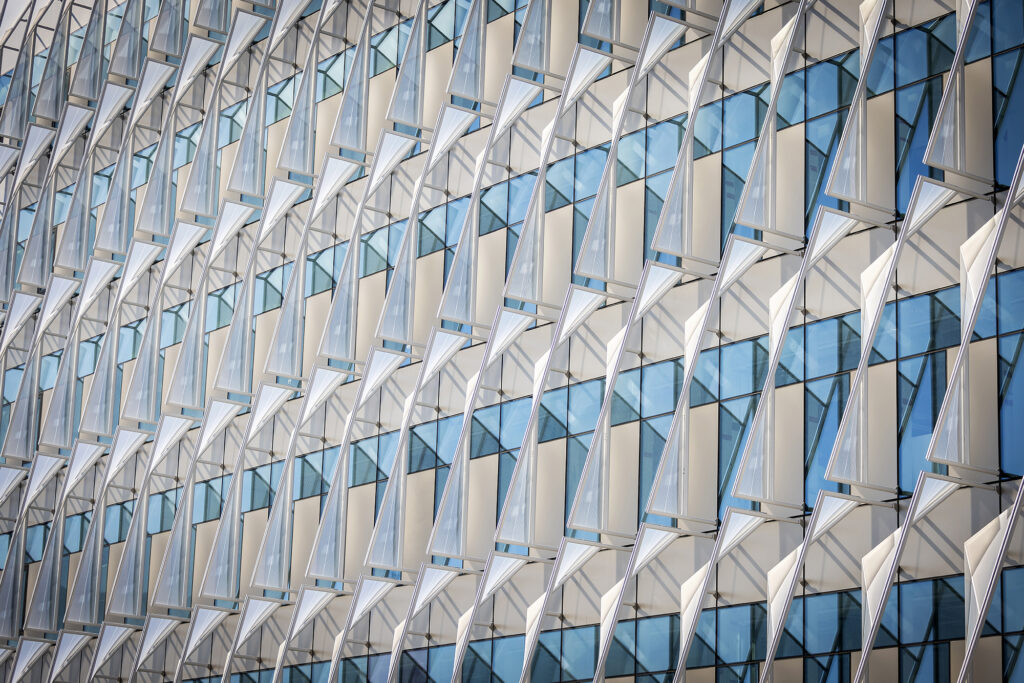
A microscopic surface? An AI-generated image? A series of fun-house mirrors? Wrong. This is a close-up view of the sun shades on the facade of the new Vagelos Laboratory for Energy Science and Technology (VLEST), located on Penn’s campus at 32nd and Walnut Streets.
Slated to open this winter, the 112,500-square-foot laboratory is a collaboration between Penn Engineering and Penn Arts & Sciences and promises to usher in the future of energy research and technology at Penn. It is therefore fitting that the building itself was designed with energy and sustainability at the forefront.
The building’s sun shades were designed by Behnisch Architekten, a German architectural firm, and have a “striking finlike shape, working in tandem with a horizontal and vertical window design that efficiently manages solar gain while still allowing for occupant-friendly views,” notes Penn Today.
In other words, a critical building design challenge can be managing the energy impact of sunlight while still allowing for uncovered windows where occupants of the spaces are able to leverage daylight and see outside. The unique facade of the VLEST is simultaneously able to reduce energy usage caused by solar heat impact and allow for stunning views because these geometric shades feature a bottom panel that reflects away the solar heat from the glass surface while the smaller top panel encourages the diffusion of light deep into the space above eye level.
To learn more about this leading-edge building design, check out the full piece, “What’s That? Sun shades at the Vagelos Lab,” originally published in Penn Today and written by Brandon Baker.
Photo by Eric Sucar
